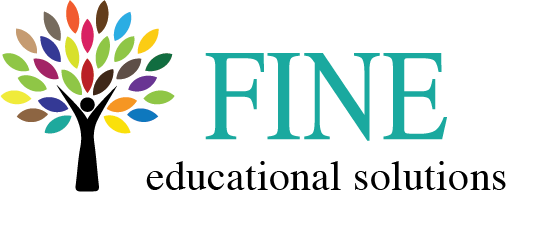Beyond the Degree: How Early Career Exploration Can Maximize College ROI...
Dec 3, 2024 | By: Fine Educational Solutions
... and Five Simple Steps to Start Career Exploration in High School
Since most adults spend more time at work than anywhere else and college is a significant investment, identifying potentially fulfilling careers should be on every high school junior and/or senior’s to-do list. Further, I would posit that for most people, the main reason to earn a degree is to create fulfilling (personal & financial) opportunities that translate into the ability to live one’s best life.
In the early 1960s, when the average annual cost of attendance at a four-year institution was $12,126 (1)–adjusted for inflation–the idea of attending college to “find yourself” may have been reasonable. Furthermore, in the 1960s, fewer people attended college and earned degrees, likely making the relative value of a degree more meaningful for people looking for post-college employment. As of 2022-2023, the average annual cost of attendance at a four-year institution was $27,673. Specifically, the average cost of four years at a public university was $81,604, and the average cost of four years at a non-profit private university was $211,092 (2). With the recent news about Vanderbilt charging $94,072 per year, New York University posting its cost of attendance at $93,184, the cost of public institutions rising, for example, UCLA at $42,059 per year, and the addition of fees for programs such as athletics, these averages will likely continue to increase (3).
According to the Education Data Initiative, 22.3% of bachelor’s degree earners take more than four years to complete their program, thus, the cost of a degree may exceed the four-year averages cited above. In fact, most institutions report six-year graduation rates, a throwback to the 1980s and 1990s, when there was increased scrutiny of student-athlete academic success, especially in revenue-generating sports such as football, culminating in the Student Right-to-Know (SRK) Act of 1990.
While it's clear that college is expensive and on-time graduation rates are lackluster, it’s less obvious why students don’t take steps to avoid becoming part of these unfavorable statistics. While it may be impossible to eliminate all risks associated with college attendance and timely graduation, young people can mitigate risk by being proactive and using their high school years to think about who they are and how that can inform their futures. I am not suggesting that students should make commitments to career paths in high school. Rather, high school students should seek a sense of direction by educating themselves on what is out there that could be right for them.
We recommend that high school juniors start identifying and exploring meaningful career paths so they don’t have to wait until a mid-life crisis to consider what they truly want to do. Investing in a college degree and choosing a career is too important—and too costly—to approach without adequate planning and foresight.
Five Simple Steps to Start Career Exploration in High School
ONE: Learn about the connections between personality and career fit.
TWO: Take a free Myers Briggs personality types test by clicking HERE
THREE: Take a free Holland Code Career Test by clicking HERE
FOUR: Research and explore careers using the U.S. Department of Labor’s My Next Move and the U.S. Bureau of Labor Statistics Occupational Handbook
Pro Tip💡Pay special attention to the education required, salary, and career outlook to ensure a career of interest is attainable and sustainable (i.e., can and will you be able to commit to the education, training, certifications, licensure, etc. required to enter the field and will you be able to live the life you aspire to live on the expected earnings?)
FIVE: Conduct informational interviews and/or shadow professionals
For those interested in a formal, guided, comprehensive, and strategic college and career exploration process, working with a professional who has expertise and access to tools only available to counselors is recommended. While I prefer the research-supported, evidence-based GS120™ to help my clients understand how abilities, interests, values, and personality intersect to find the best career matches, it is not the cheapest option. That said, I believe so much in the effectiveness of the GS120™ that it is included in most of my comprehensive college counseling packages.
Ultimately, high school students do not need to know exactly what they want to do, but having a general sense of direction helps prevent wasting time and money. For example, students interested in nursing or teaching who fail to consider that before applying to college may end up having to transfer or go back to school post-baccalaureate to pick up additional credentials. In other words, becoming a bachelor's level nurse or teacher may take at least six years instead of four. Not only is there a delay in when earning can start, but there is a cost associated with additional education and cost of living.
For more information on why and how to explore degree and career options while in high school, feel free to reach out at kathy@fineeducationalsolutions.com
(1) Using constant dollars, prepared by the Bureau of Labor Statistics and adjusted to an academic-year basis.
(2) 22022-2023 Source: The National Center for Education Statistics
(3) College athletes are getting paid and fans are starting to see a growing share of the bill


Leave a comment
0 Comments